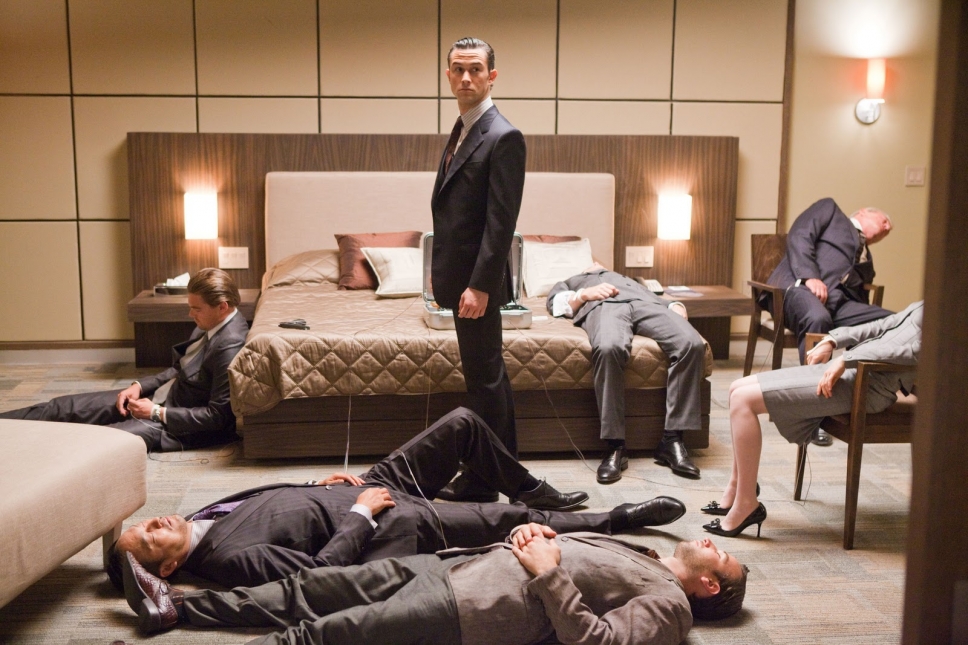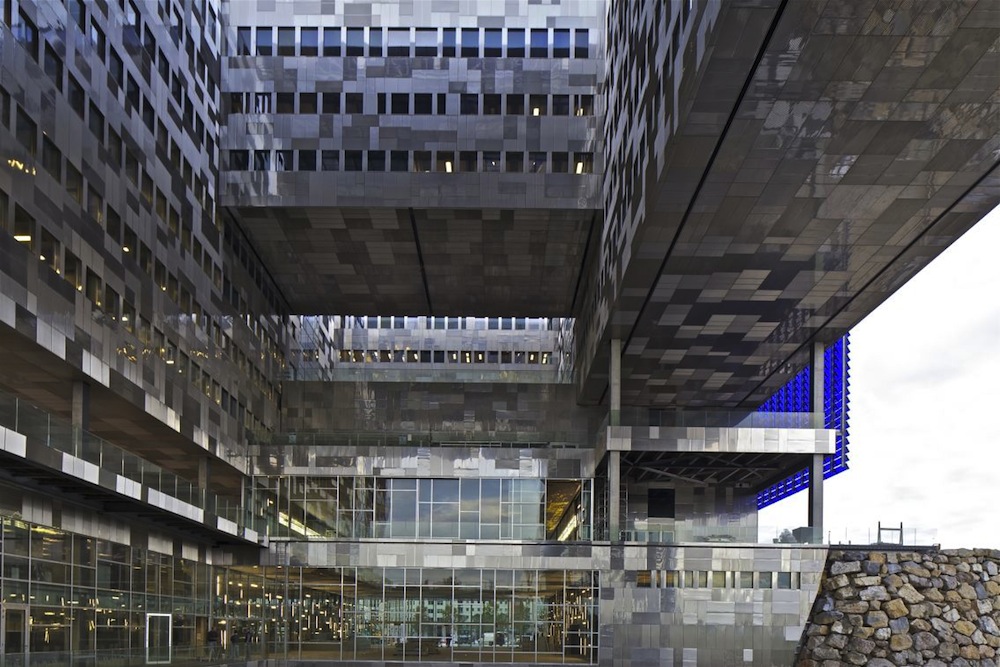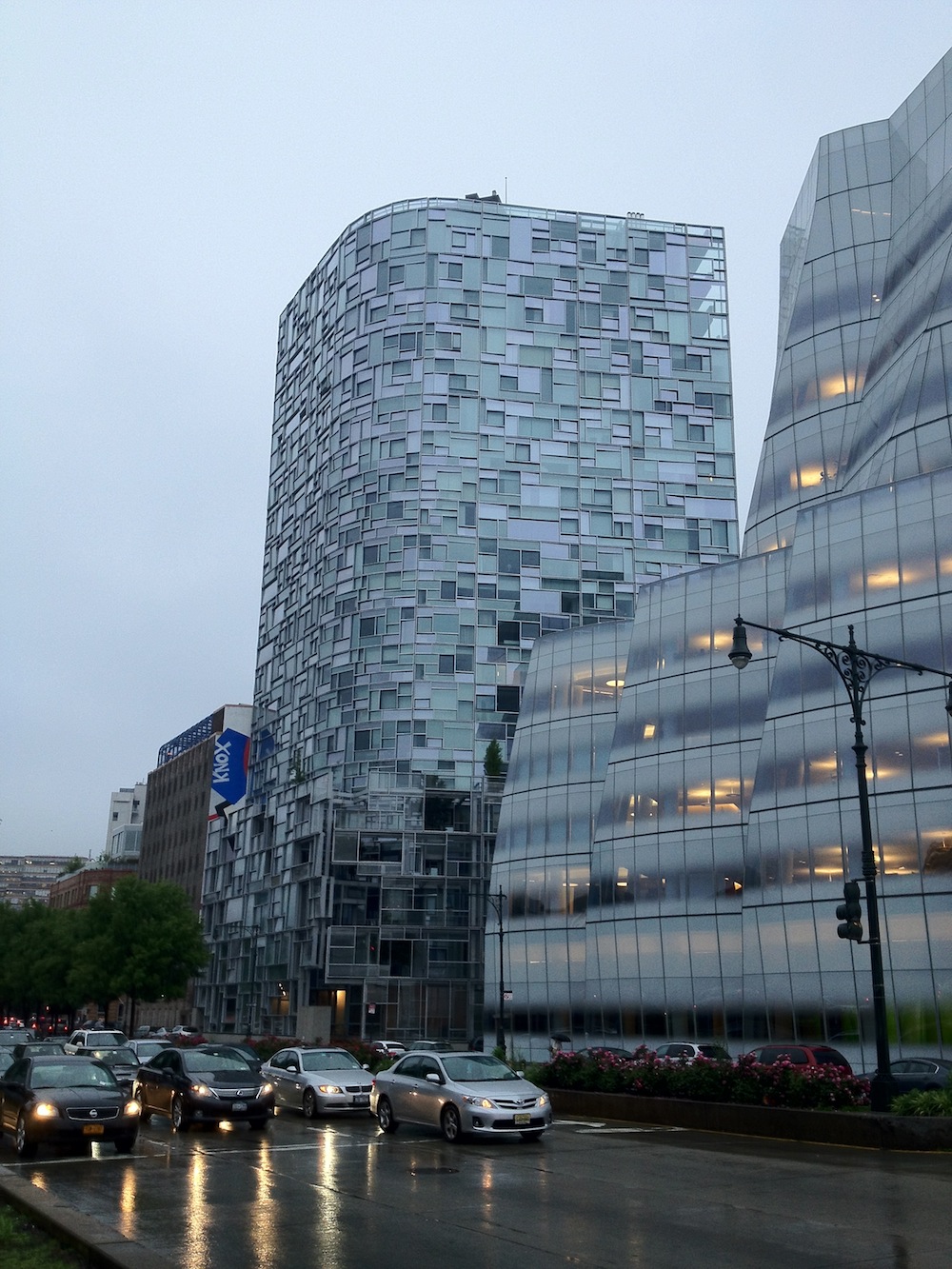Self-design has entered a new era—an era of mass production. Today, hundreds of millions of people around the world are creating their doubles, their avatars, and their public personas on the Internet. Contemporary means of image production such as photo and video cameras are relatively cheap and universally accessible. Social networks like Facebook, YouTube, and Twitter give global populations the ability to make their photos, videos, and texts readily available; these social media circumvent traditional institutions of censorship and control even as they create new methods in the management of personal information. At the same time, contemporary design makes it possible for the same populations to shape and experience their apartments or workplaces as artistic installations. Diet, fitness, and cosmetic surgery allow them to fashion their bodies as art objects. It seems that the utopian promise that Joseph Beuys formulated in the 1960s—that everybody will become an artist, i.e., a creator of his or her own public persona—has been realized.
But this realized utopia is increasingly experienced as a radical dystopia. There is one obvious reason for that: Utopia always turns to dystopia when rights that were fought for become duties. Today we live under a regime of compulsive self-design and compulsive self-simulation. We do not only have the right to create our public persona by artistic means, we have an obligation to do that. If we do not do it, we are socially punished. Thus, liberation in the name of democratic aesthetic rights turns into the terror of ubiquitous aesthetic duties. This shift from aesthetic utopia to aesthetic dystopia is a more or less obvious reality of our moment.
A related problem seems to be more important to me: Who can look over and compare the hundreds of millions of videos, photos, and texts that circulate through contemporary information networks? Who is the observer, the spectator of all these images and self-created public personas? Only God could be such a spectator, but he doesn’t need to see all this visual stuff, being able to perceive invisible souls that remain hidden behind it. So, if we want to further speak of the aestheticization of life, we have to bear in mind that this aestheticization is produced for nobody—or, rather, for an absent, unknown, hidden subject of aesthetic contemplation, perhaps for the shifting multitudes of the Internet users.
We tend to assume that our bodies—I mean material, real bodies—are surveilled and analyzed as we create our virtual bodies. (You remember The Matrix. Or, more recently, Inception.)

Contemporary techniques in communication enable others to look at our bodies and to trace their movements (through surveillance cameras and other means), ignoring the virtual bodies that we offer them for contemplation. We can say that we are living in the world in which my gaze and the gaze of the other no longer meet. Earlier, they met through the physical walls of transparent architecture. The transparency of this architecture is a mutual one—one sees the others seeing one, like in an aquarium, where one is seen by the fishes. But as Buckminster Fuller stated in 1965, we are operating 99 percent beyond the immediate visual control of our own eyes under the conditions of contemporary media. Our opening to the world goes through the channels that are concealed from our eyes. Likewise, others see us through channels outside our optical control. That means that for the contemporary subject the gaze of the other remains unidentifiable; it is constituted only through an assumption, through a suspicion. Today, for us, the public space is a paranoid space. (Think of Gus van Sant’s Paranoid Park.) We can react to this public/paranoid space only in the mode of anxiety.
Accordingly, confronted with a world of total design, we can only accept a catastrophe, a state of emergency, a violent rupture in the designed surface, as reason to believe that we are being allowed a view of the reality that is hidden behind it. Following the death of God, the conspiracy theory became the only surviving form of traditional metaphysics as a discourse about the hidden and the invisible. Where we once had nature and God, we now have design and conspiracy theory.
Aestheticization and Design
Design is mostly understood today as a medium of aestheticization of the world—of commodities, of human bodies, of buildings. Further, aestheticization is mostly identified with seduction and celebration. Walter Benjamin obviously had this use of the term “aestheticization” in mind when he opposed the politicization of aesthetics to the aestheticization of politics at the end of “The Work of Art in the Age of Mechanical Reproduction.”1 Here the function of design is still described in terms of the old metaphysical opposition between appearance and essence. Design, in this view, is responsible only for the appearance of things, and thus it seems predestined to conceal the essence of things, to deceive the viewer’s gaze, to prevent his or her understanding of the true nature of reality. Thus, design has been repeatedly interpreted as an epiphany of the omnipresent market, of exchange value, of fetishism of the commodity, of the society of the spectacle—as the creation of a seductive surface behind which things themselves not only become invisible but disappear entirely.
Already this description demonstrates that design is not a machine that beautifies things but rather a machine that produces suspicion toward them. One can argue that every act of aestheticization through design is always already a critique of the object of aestheticization simply because this act calls attention to the object’s need for a supplement in order to look better than it actually is. Such a supplement always functions as a Derridean pharmakon—while design makes an object look better, it likewise raises the suspicion that this object would look especially ugly and repellent were its designed surface to be removed. We suspect something terrible to be going on behind the design, whether cynical manipulation, political propaganda, hidden intrigues, vested interests, or even criminality.
Modern design wants the apocalypse now: the apocalypse that unveils things, strips them of their ornament, and causes them to be seen as they truly are. Without this claim that design manifests the truth of things, it would be impossible to understand many of the discussions among designers, artists, and art theorists over the course of the twentieth century. Such artists and designers as Donald Judd or architects such as Herzog & de Meuron, to name only a few, do not argue aesthetically when they want to justify their artistic practices but rather ethically, and in doing so they appeal to the truth of things as such. The modern designer does not wait for the apocalypse to remove the external shell of things and show them to people as they are. The designer wants here and now, the apocalyptic vision that makes everyone New Men. The body takes on the form of the soul. The soul becomes the body. All things become heavenly. Heaven becomes earthly, material. Modernity becomes absolute.
Thus, the modernist production of sincerity functioned as a reduction of design, in which the goal was to create a blank, void space at the center of the designed world, to eliminate design, to practice zero-design. In this way, the artistic avant-garde wanted to create design-free areas that would be perceived as areas of honesty, high morality, sincerity, and trust. Zero-design attempts to artificially produce this crack for the spectator, allowing him or her to see things as they truly are. Design seeks to shape the gaze of viewers in such a way that they become capable of discovering things themselves. The rise of modern design is profoundly linked to the project of redesigning the old man into the New Man. In this sense, the requirement formulated by Adolf Loos to reduce and actually remove design ultimately coincides with a requirement formulated by Jean Nouvel to build the void in terms of public space.2 In both cases one wills honesty and transparency, making visible one’s own gaze along with one’s own exposure to the gaze of the others.
Architecture and Public Space
The role of the architect vis-à-vis the public space is a highly paradoxical one: He has to build the void but to build anything at all is always to build a closure. That means that the architect who tries to create a public space must be at the same time, so to speak, the anti-architect.
Architects mostly try to escape this paradox by building the transparent constructions—using glass and other transparent materials. (Jean Nouvel does the same, in a way—consider his city hall in Montpellier, where the large surfaces of curtain wall are described as a “huge transparent door,” or his shimmering glass tower on the west side of New York, which uses an abundance of glass as a compensation for its negligible publicness.)


An early example of such a construction was, as we know, the so-called Crystal Palace built by Joseph Paxton in London, in 1851 for the Great London Exhibition. This building created an image of a utopian public space that dominated the European imagination for a very long time. And one can argue that it constituted the very public itself—even if it did so with some delay. Namely, the First International was created during the meetings that took place at the second London exhibition in 1862 (through meetings between English, German, and other groups of workers sent to the exhibition by their bosses to get acquainted with the current stand of technique—the delegation of the French workers was sponsored by the French government of Napoleon III). The exhibition building was already a different one—but one can argue that the concept of the International was inspired by the first transparent, utopian building by Paxton. In 1864 the International Workers Association was officially founded. Interestingly, Karl Marx was registered in the General Council as an architect (everybody has to be registered with indication of his profession). Obviously, Marx understood himself as a follower of Paxton—as a creator of a certain kind of new public space. In his Arcades Project, Walter Benjamin stresses this connection between modern exhibitions, exhibition architecture, and the emergence of the modern notion of the public using precisely the example of the Second London Exhibition engendering the First International. The public space is for Benjamin basically the exhibition space, the space of exposure and self-exposure: of commodities to the visitors, of the visitors to one another. And the transparent Crystal Palace exposed the totality of this space to the outside view—and at the same time the totality of the outside world to the gaze of the visitors of the exhibition.

Thus, to enter the clearing, the emptiness, the utopia of public space means not only—and, in fact, not so much—the opening of the world to the subject but, rather, the self-exposure of the subject, of his or her body, to the gaze of the others. In the public space one becomes subjected to the obligation to expose oneself, to become open, authentic, even transparent for the gaze of the others. Now, the public space is created not so much by the transparency of the architecture but, rather, by the media and modern tourism. These create the unbuilt, virtual public space of transparency in which everybody and everything begin to be exposed and subjected to the requirement of authenticity, self-unconcealment, self-revelation, honesty, and truthfulness. When the public space is not built but constituted predominantly by the media and tourism, we arrive at a new turn in architecture and design.
Nowadays, even if we are generally inclined to distrust the media, it is no accident that we are immediately ready to believe reports and newscasts about a global financial crisis or the images of September 11 delivered into our apartments. Even the most committed theorists of postmodern simulation began to speak about the return of the real as they watched images of September 11. There is an old tradition in Western art that presents an artist as a walking catastrophe, and—at least from Baudelaire on—modern artists were adept at creating images of evil lurking behind the surface, which immediately won the trust of the public. In our time, the romantic image of the poète maudit is substituted by that of the artist being explicitly cynical—greedy, manipulative, business-oriented, seeking only material profit, and implementing art as a machine for deceiving the audience. We have learned this strategy of calculated self-denunciation—of self-denunciatory self-design—from the examples of Salvador Dalí and Andy Warhol, of Jeff Koons and Damien Hirst. However old, this strategy has rarely missed its mark. Looking at the public image of these artists we tend to think, “Oh, how awful,” but at the same time, “Oh, how true.” Self-design as self-denunciation still functions in a time when the avant-garde zero-design of honesty fails. Here, in fact, contemporary art exposes how our entire celebrity culture works—through calculated disclosures and self-disclosures. Celebrities (politicians included) are presented to the contemporary audience as designed surfaces, to which the public responds with suspicion and conspiracy theories. Thus, to make politicians look trustworthy, one must create a moment of disclosure—a chance to peer though the surface to say, “Oh, this politician or media star is as bad as I always supposed him or her to be.” With this disclosure, trust in the system is restored through a ritual of symbolic sacrifice and self-sacrifice, stabilizing the celebrity system by confirming the suspicion to which it is necessarily already subjected. According to the economy of symbolic exchange that Marcel Mauss and Georges Bataille explored, the individuals who show themselves to be especially nasty (i.e., the individuals who demonstrate the most substantial symbolic sacrifice) receive the most recognition and fame. This fact alone demonstrates that this situation has less to do with true insight than with a special case of self-design: Today, to decide to present oneself as ethically bad is to make an especially good decision.
Thus, the Rousseauistic faith in the equation of sincerity and zero-design has receded. We are no longer ready to believe that minimalist design suggests anything about the honesty and sincerity of the designed subject. Instead, today’s media are in many ways dominated by identity politics—looking not for the universal, reductive, and minimalist but for cultural identities, traditional beliefs, and regional codes. The universality of the media has been substituted for the universality of the avant-garde and requires cultural diversity and local traditions as signifiers of authenticity instead of universality of the modernist reductions. (In this sense the zero-design begins to look, in its turn, as cover-up for regional identities: a neutral, corporate architecture.) These media requirements combined with the touristic taste for cultural difference produced what we often characterize as postmodernism.
Today, we all, architects, artists, designers, and theorists, are the heirs of certain cultural traditions, and, at the same time, of the modernist revolt against these traditions. We are subjected to the requirement of authenticity, but this requirement pushes us back to tradition and thus to revolt against this tradition to the same degree. It is a highly paradoxical situation. The absence of the socially established criteria of taste means nothing else than that any cultural activity becomes an effect of the individual risk-taking—in every individual case. The contemporary artist, architect, and theorist resemble the Nietzschean figure of the dancer on the rope. The only criterion of their success is their ability to dance on the rope under the gaze of the public for a certain amount of time.
-
Walter Benjamin, “The Work of Art in the Age of Mechanical Reproduction,” in Illuminations, trans. Harry Zohn (New York: Harcourt, Brace & World, 1968). ↩
-
At a conference in Paris celebrating Jean Baudrillard (and in which I participated), Nouvel stressed time and again that his goal as an architect is precisely to build the void, to create the emptiness where the public could constitute itself in a self-conscious way. For an elaboration on Loos's views on ornament, modernity, and design see: Adolf Loos, “Ornament and Crime” (1908), in Ornament and Crime: Selected Essays, ed. Adolf Opel, trans. Michael Mitchell (Riverside, CA: Ariadne Press, 1998), 167. ↩
Boris Groys is Professor of Aesthetics, Art History, and Media Theory at the Center for Art and Media Technology in Karlsruhe, and since 2005, the Global Distinguished Professor in the Faculty of Arts and Science, NYU. He has published numerous books including The Total Art of Stalinism, Ilya Kabakov: The Man Who Flew into Space from His Apartment, Art Power, and The Communist Postscript.

